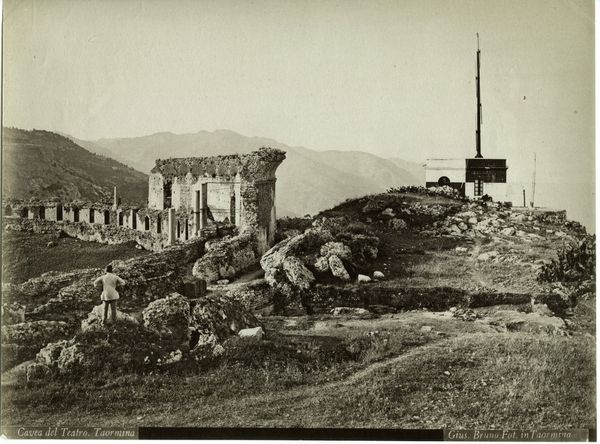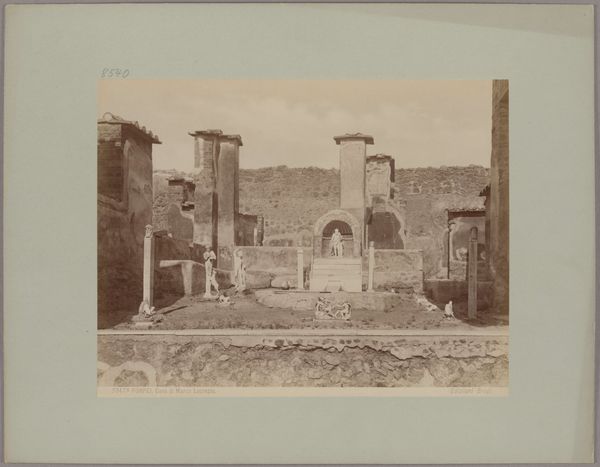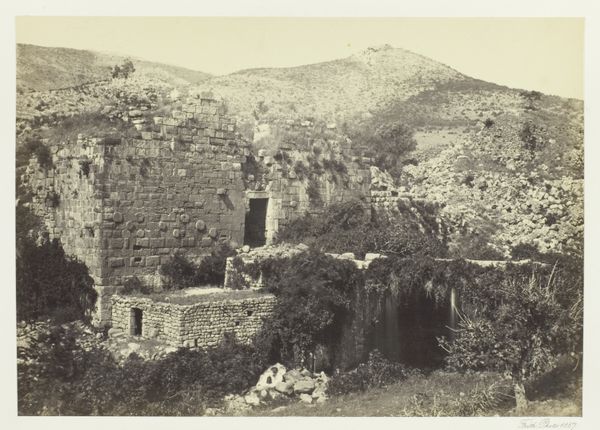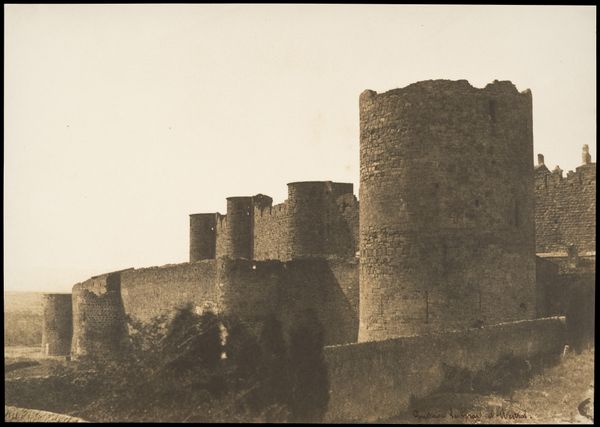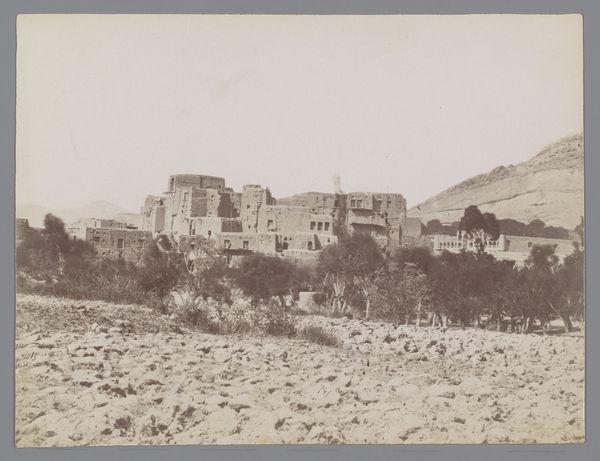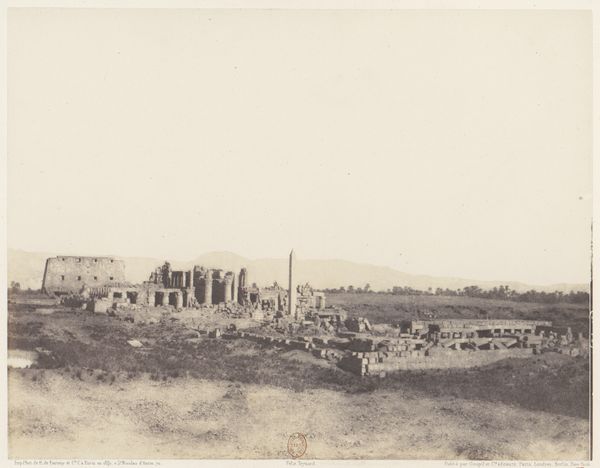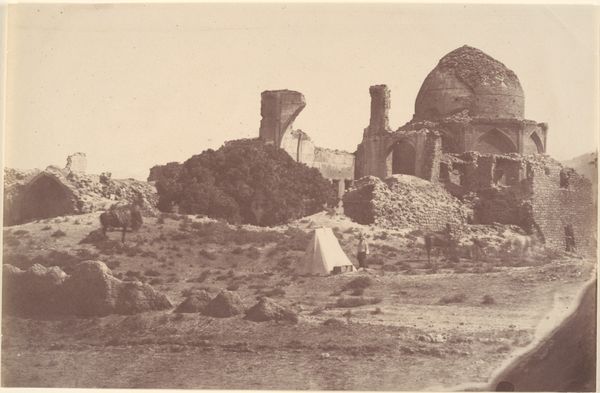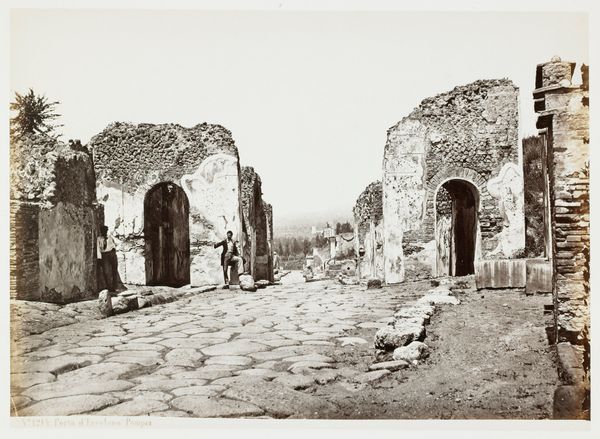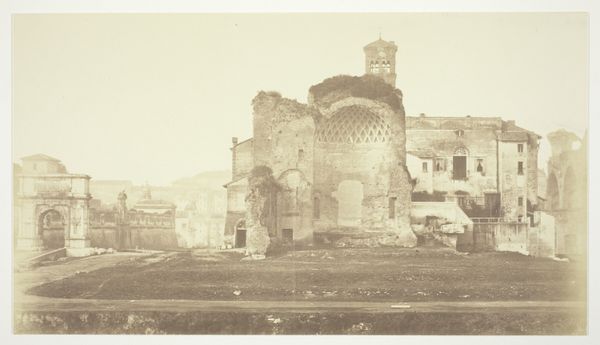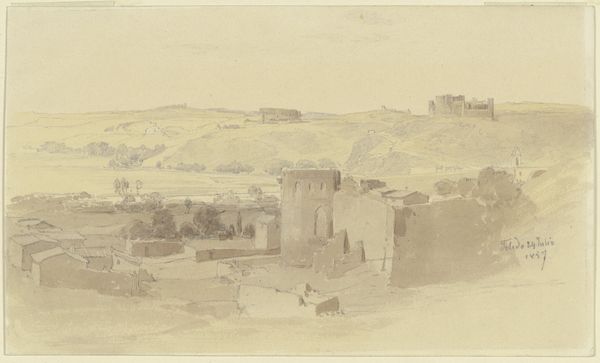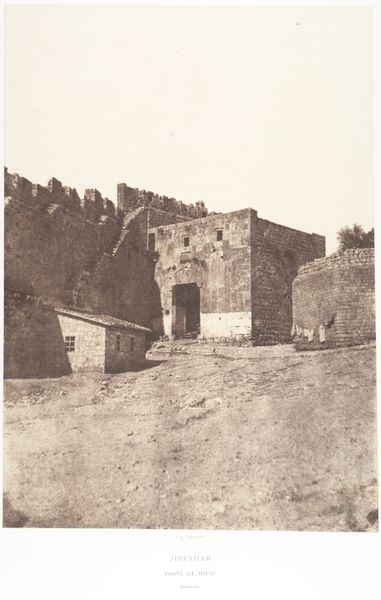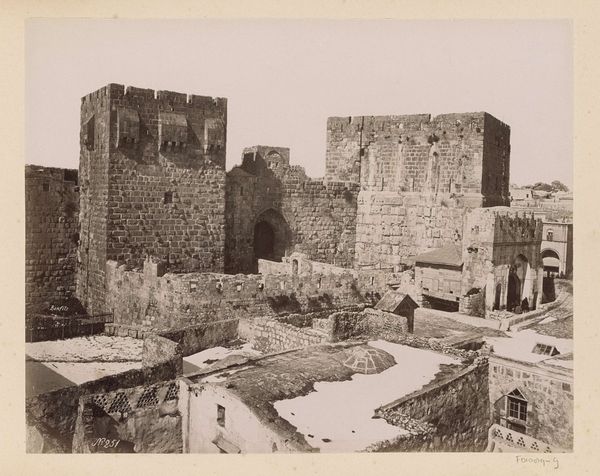
Dimensions: 13.7 × 39.2 cm (image/paper); 40.7 × 45.5 cm (mount)
Copyright: Public Domain
Curator: This is Robert MacPherson's photograph, "Untitled (Ruins of an Aqueduct)," created around 1857. It's an albumen print. Editor: My first thought is one of sheer, desolate grandeur. You know, a beautiful decay that hums with the echoes of vanished empires and long shadows across that open field. Curator: MacPherson, working primarily in Italy, documented classical architecture. What's intriguing here is his focus isn't on triumphant architecture, but instead on the fragments of Rome's aqueducts—visual testaments to time's passage and the fragility of power. The very deliberate placement seems to highlight that concept, don’t you agree? Editor: Absolutely! And the soft, sepia tones heighten that feeling. It’s almost like time is caught in the very emulsion. There is a dreamlike, romantic sensibility to this photograph. One can almost smell the dust. Do you think that this artistic and melancholic intention, rather than documentary interest, led to this almost abstract vision of a ruined structure? Curator: Precisely. Photography in the mid-19th century was entangled with scientific documentation, but it was very important to note that artists, including MacPherson, deployed the medium to invoke aesthetic and emotional responses, much like painting at the time. This piece challenges the traditional notion of landscape photography. Editor: Yes, you wouldn't put it in your house necessarily to feel joyful, right? The scale of the aqueduct diminishes into the landscape… What an image of powerlessness. I see something bleak but…ultimately something serene about our transience too, if that makes sense. Curator: Absolutely. It offers us an insight into how photography was shaping—and being shaped by—prevailing ideas about history, loss, and our relationship with the classical world, both past and present. Editor: It does ask quite a lot of us. Not just "What was Rome?" but maybe "What will we be?" Makes you think twice about skipping that history museum, right?
Comments
No comments
Be the first to comment and join the conversation on the ultimate creative platform.
